Introduction
Harnessing the power of AWS Lambda, serverless architecture is revolutionizing the way web applications are built and managed. This article explores various applications of AWS Lambda, from creating serverless websites to enhancing chatbots and voice assistants. By eliminating the need for server management, AWS Lambda allows developers to focus on writing and deploying code efficiently, making it a cost-effective and scalable solution for many businesses.
Additionally, integrating Lambda with other AWS services such as Amazon S3, API Gateway, and Kinesis offers robust solutions for real-time data processing, automated backups, and more. The article also highlights real-world examples of organizations leveraging AWS Lambda to enhance operational efficiency, scalability, and innovation across diverse use cases.
Serverless Websites
AWS service enables the development of fully operational serverless websites, effortlessly connecting with Amazon S3 for static content hosting and API Gateway for dynamic content creation. This architecture eliminates the need for server management, allowing developers to concentrate on writing and deploying code efficiently. As highlighted by industry experts, the zero-administration nature of the service means there's no need to deal with EC2 instances, install operating systems, or worry about scaling issues, making it a cost-effective and efficient solution.
For example, GoDaddy, a provider of online tools for entrepreneurs, utilizes AWS services to manage their extensive data processing needs, benefiting from serverless architecture's scalability and cost-efficiency. This approach is particularly beneficial for organizations aiming to optimize their batch processing jobs without significant upfront investments in hardware or software licenses.
Moreover, the flexibility of AWS is evident in its ability to send mass emails using Simple Email Service (SES), further demonstrating its utility in diverse use cases. By removing server management, AWS services enable developers to concentrate on providing value and innovation, leading to improved business results.
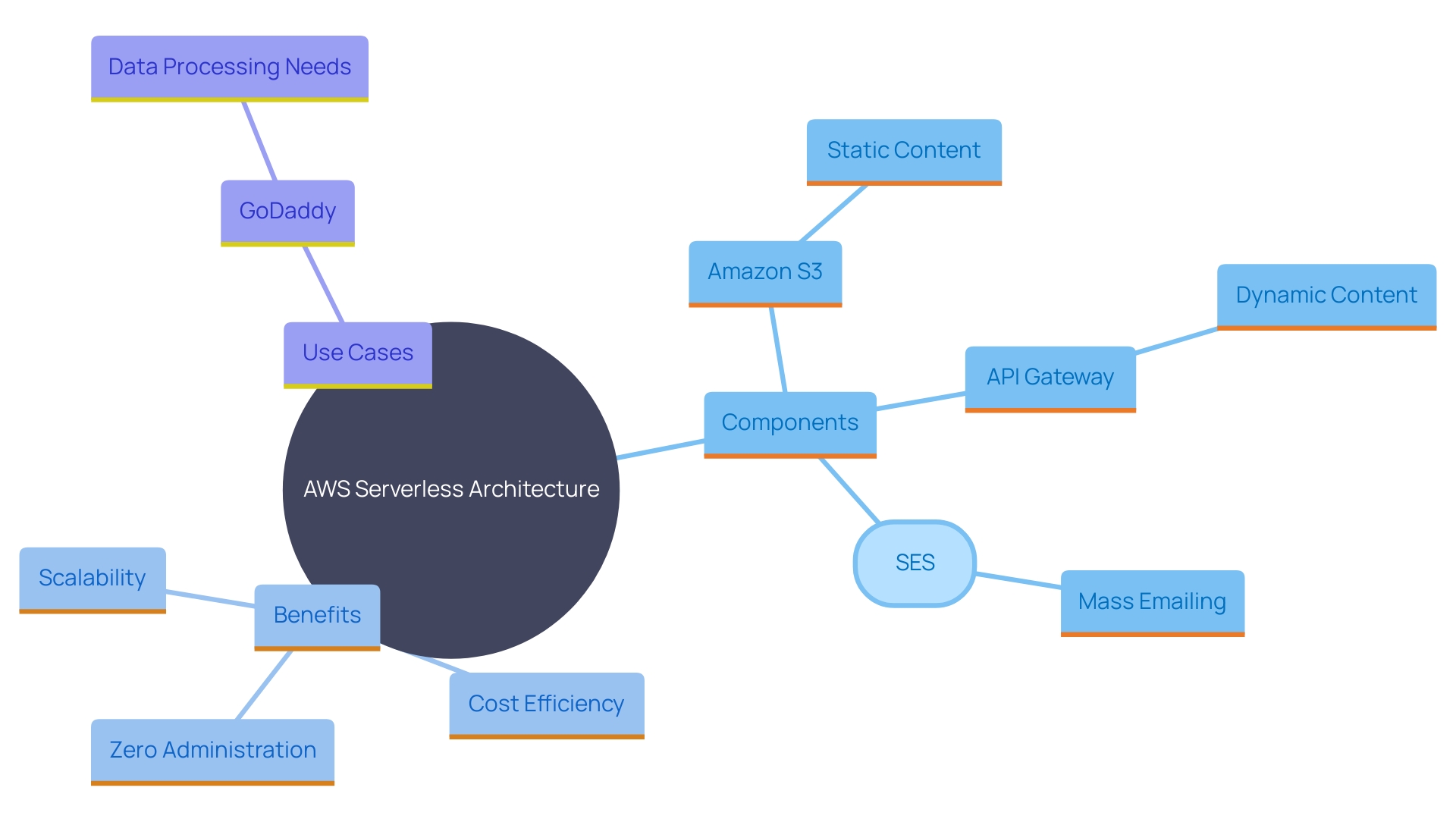
API Gateway Integration
Combining serverless functions with Amazon API Gateway enables companies to build scalable APIs without the hassle of server management. This synergy is instrumental in supporting a microservices architecture, which enhances system modularity and significantly reduces operational costs. For instance, Contentsquare's implementation of microservices and Apache Kafka for notification delivery highlights the efficiency and scalability achievable with such architectures. Furthermore, Authorizers can protect API Gateways, guaranteeing that only permitted users can access confidential information, as shown in multiple real-world examples. According to industry experts, APIs are the foundational elements of modern software development, enabling seamless communication between different software programs and fostering innovation. With over 24,000 APIs registered on ProgrammableWeb and more than 2 million API repositories on GitHub, the importance of APIs in today's digital landscape cannot be overstated.
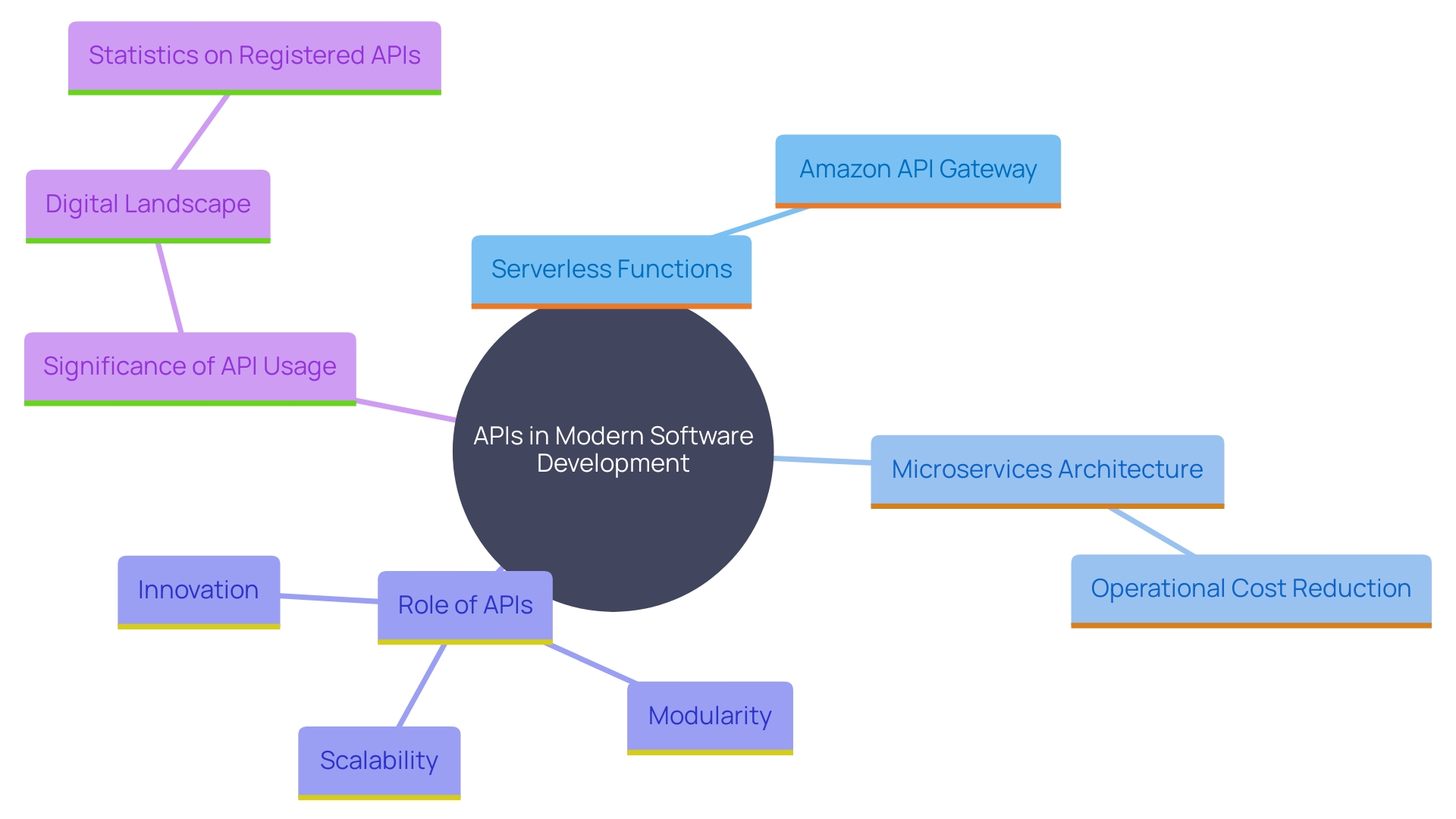
Real-time Data Transformation
AWS service allows organizations to carry out real-time information transformations effortlessly. By connecting with Amazon Kinesis, functions can handle and modify incoming stream information instantly. This capability is essential for applications requiring continuous information flow and real-time analytics. For instance, organizations can leverage this integration to enhance customer experience through on-time, optimized responses. As information comes in from Kinesis, serverless functions handle it, ensuring low latency and high throughput before storage or further analysis. This approach differs from conventional batch processing, which often faces challenges with the requirements of large-scale real-time information. By embracing AWS Kinesis and serverless computing, companies can sustain a competitive advantage, utilizing real-time information insights to foster innovation and efficiency.

Automated Backups and Everyday Tasks
AWS Lambda functions offer an efficient solution for automating regular backup processes, such as creating snapshots of Amazon RDS databases or S3 bucket contents. This automation ensures information integrity by eliminating the risks associated with manual intervention. Considering the durability guarantees of AWS services—like S3’s 99.999999999% durability—automated backups improve reliability, ensuring that information is securely stored and recoverable when required. Continuous deployment practices, like those at Albion, demonstrate how evolving backup schemas and API changes can impact data restoration. By utilizing serverless functions, organizations can mitigate these risks and maintain robust, reliable backup processes that adapt to technological changes.
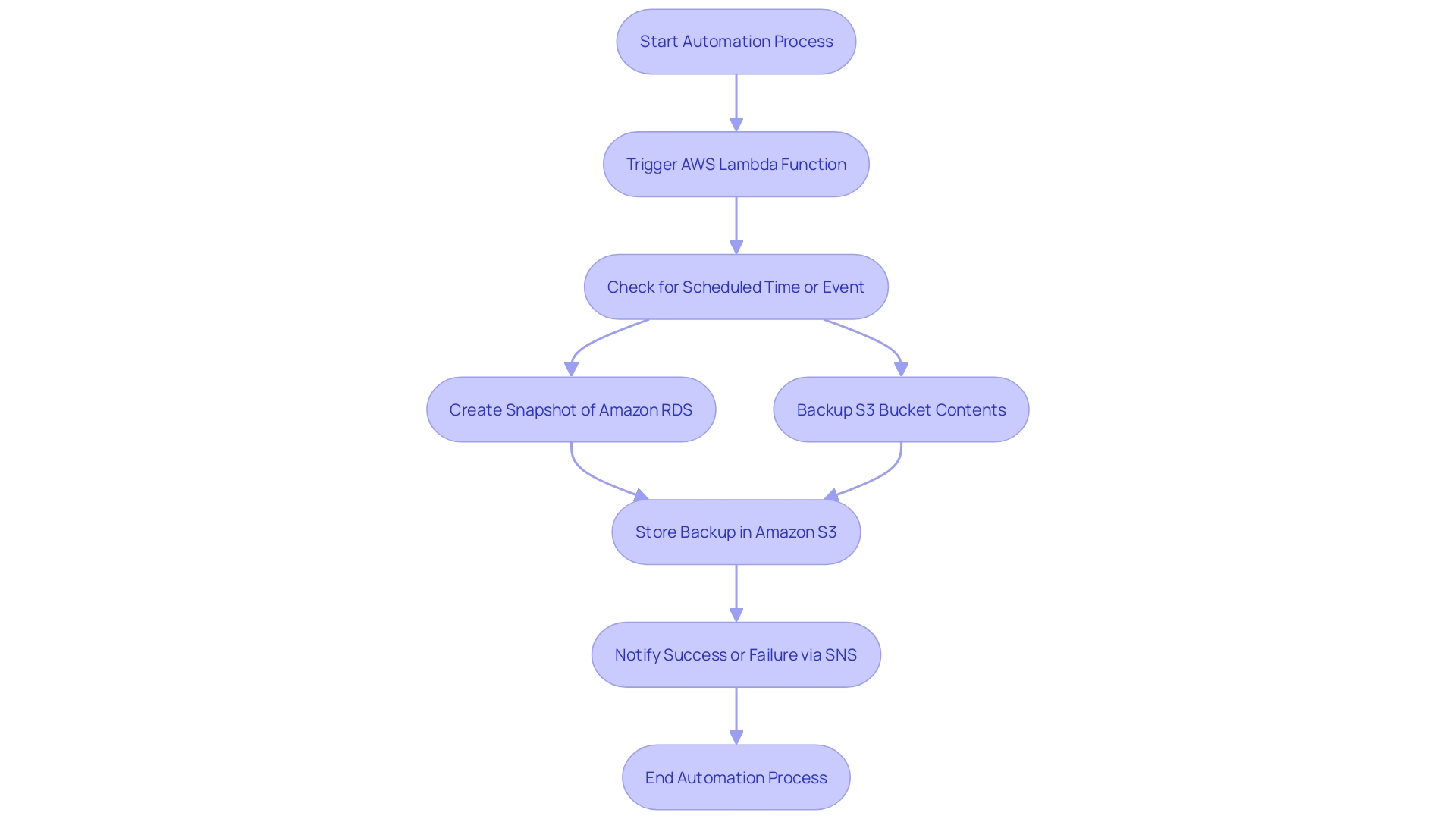
Processing Uploaded S3 Objects
When files are uploaded to Amazon S3, AWS services can automatically trigger functions to process the files, such as resizing images or converting document formats. This capability significantly enhances automation and efficiency in handling uploaded content. For instance, the International Image Interoperability Framework (IIIF) sets open standards to make image and audiovisual files available at scale, and AWS's real-time processing capabilities align seamlessly with these standards. This approach allows researchers to zoom in and conduct a deep analysis of digitized resources while saving bandwidth by only downloading the needed data. Furthermore, the system can enable on-the-fly region selection, allowing portions of assets to be utilized and remixed, thus providing a consistent, unified experience across digital collections. This not only facilitates efficient content management but also promotes innovation and collaboration within the global community of cultural heritage institutions.
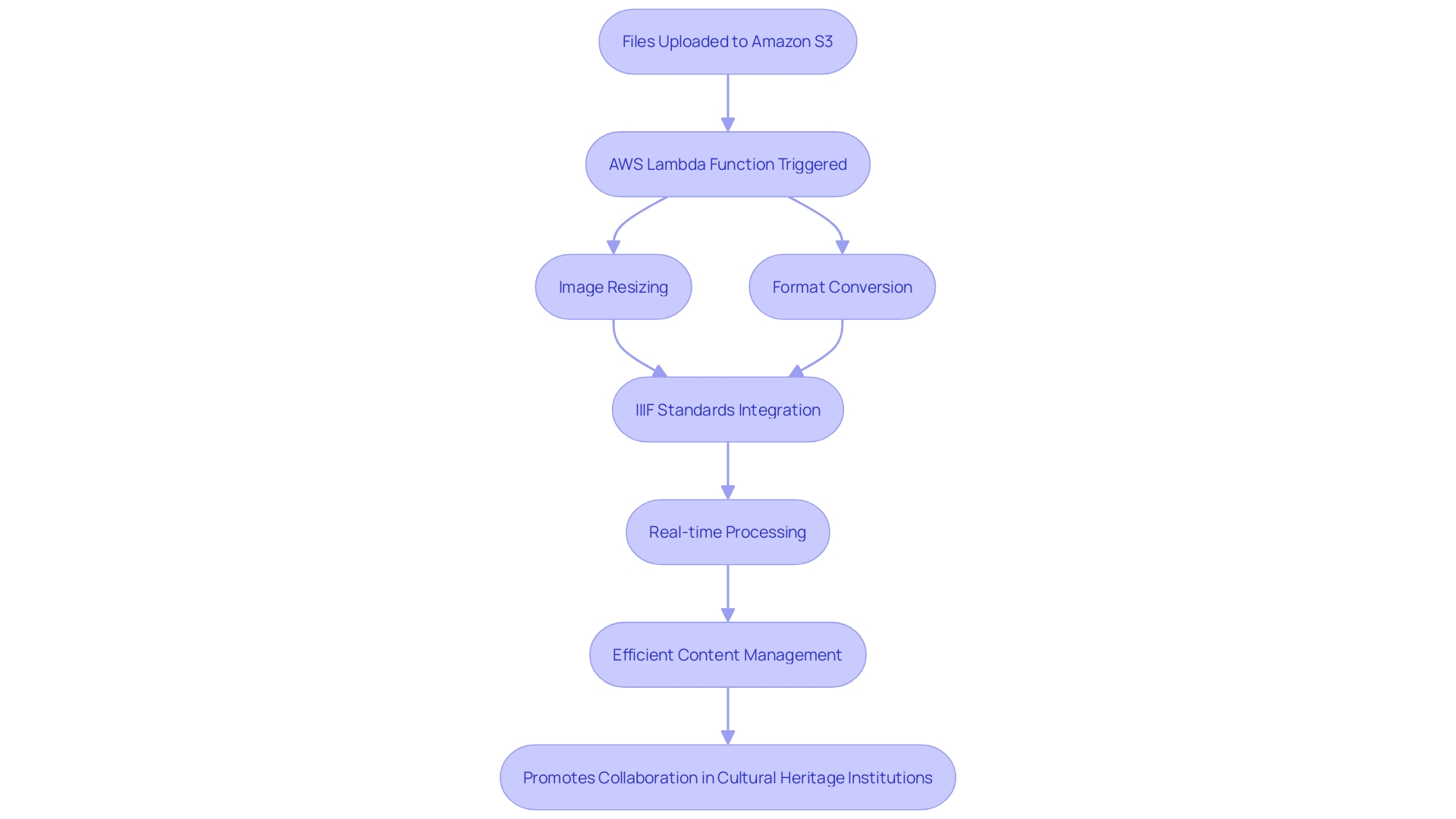
ChatBots and Voice Assistants
The AWS service improves the functionalities of smart chatbots and voice assistants by effortlessly handling user inquiries alongside tools such as Lex. Lex utilizes the same technology that drives Alexa, allowing developers to create advanced conversational interfaces with natural language comprehension. This integration creates responsive and interactive user experiences across various platforms.
For instance, DoorDash successfully utilized AWS services and Amazon Lex to manage high call volumes from their delivery workers, or Dashers, by providing a more efficient self-service experience. This approach reduced the burden on live agents and maintained high standards for issue resolution and customer satisfaction. Similarly, Intact Financial Corporation improved its customer support call centers by deploying AI services from AWS, which unlocked insights from calls and enhanced customer service efficiency.
As the 8x8 State of Conversational AI in the Contact Center Report highlights, the adoption of AI in contact centers is ushering in an era of enhanced customer interaction, delivering the convenience and consistency that users demand.
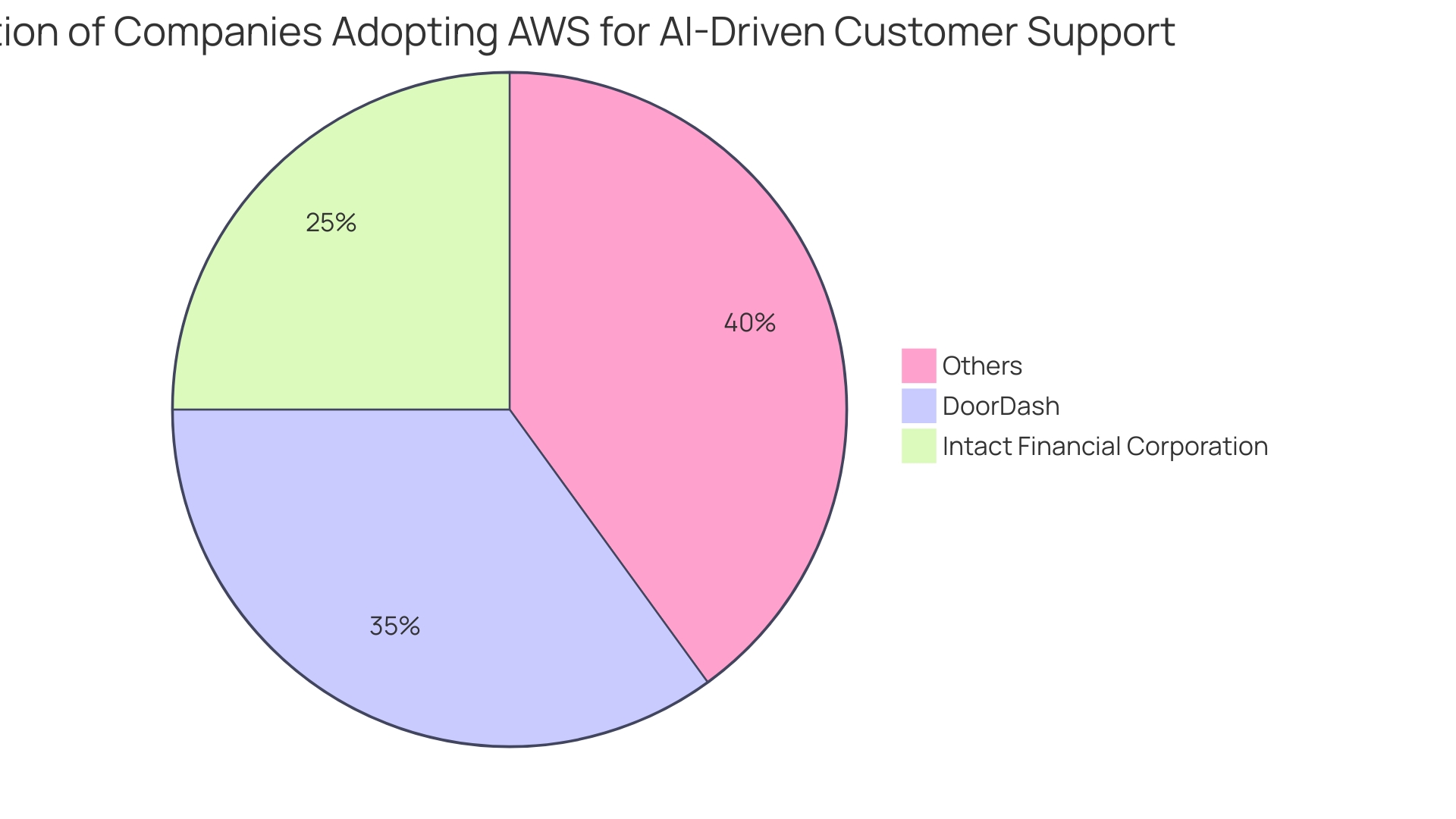
Efficient Monitoring and Log Analysis
AWS serverless functions enable real-time log analysis for AWS services, offering organizations the ability to gain crucial insights into system performance and user behavior promptly. This capability is pivotal in identifying and resolving issues proactively. For instance, at Vertex Pharmaceuticals, machine learning models are leveraged to analyze vast datasets, including microscope images. In the same way, AWS service can be utilized to process and examine log files in real-time, enabling rapid and precise decision-making. This approach underpins the proactive issue resolution strategy, ensuring optimal system performance and a seamless user experience. More than 2,100 enterprises globally, like Vertex Pharmaceuticals, utilize such technologies to streamline operations and enhance their technological frameworks.
Predictive Page Rendering
AWS serverless computing significantly enhances web application performance through predictive page rendering. By leveraging user behavior analytics, the platform can pre-generate content, resulting in quicker load times and improved user engagement. This capability is particularly beneficial in dynamic environments where user interaction patterns can be analyzed and anticipated.
Rushikesh Jagtap, a Solutions Architect with extensive experience in AWS Analytics services, emphasizes the importance of scalable and modern analytical solutions in driving efficiency. In the same way, Tayo Olajide, an expert in Cloud Data Engineering, emphasizes the transformative strength of information in informed decision-making, which corresponds with the functionalities of AWS in predictive rendering.
Google Cloud's recent advancements in generative AI for personalized online shopping experiences further illustrate the trend towards leveraging AI for enhanced user interactions. 'The capability to utilize conversational AI agents swiftly demonstrates the potential for AWS to implement similar predictive and responsive functionalities in web applications.'.
By combining AWS functions with services such as Amazon S3 for information storage and Amazon SageMaker for machine learning model training and deployment, organizations can create strong systems that not only anticipate user needs but also provide content effectively, ensuring a smooth user experience.
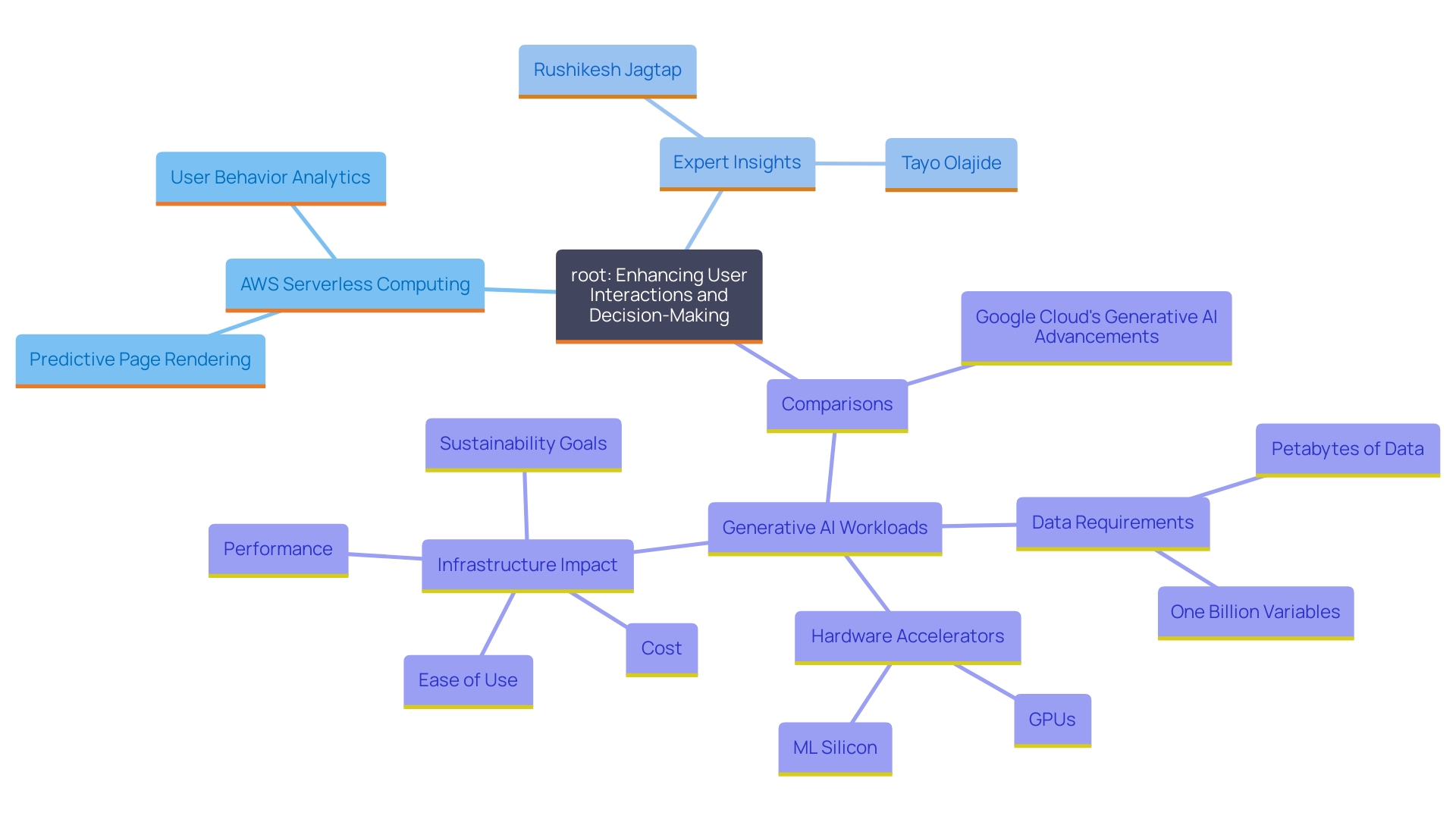
Serverless CRON Jobs
AWS's serverless computing service provides a powerful alternative to traditional CRON jobs by executing scheduled tasks without the necessity of maintaining dedicated servers. This serverless approach enhances efficiency in managing periodic processes like sending notifications or performing data clean-up activities. Dr. Swami Sivasubramanian, Vice President of Data and Artificial Intelligence at AWS, emphasized, "Serverless offerings dramatically simplify what it takes to build, run, and manage applications at scale." With this service, organizations can utilize a scalable, budget-friendly solution that adjusts dynamically to workload patterns, enhancing both performance and expenses. This makes it an ideal choice for enterprises looking to streamline their IT operations and focus on innovation.
Integrating with External Services
AWS's ability to seamlessly integrate with various external services significantly enhances an organization's functionality. By connecting to third-party APIs, this service provides extensive opportunities for innovation. For instance, this service can simplify integration efforts with tools for monitoring, observability, security, and governance through its support for both internal and external extensions. External extensions, in particular, operate independently within the execution environment and continue running after the function invocation concludes, providing greater flexibility in integration.
Organizations like Contentsquare have leveraged microservices and Apache Kafka for scalable notification delivery, demonstrating the potential of such integrations. The power of this service in supporting these integrations lies in its zero-administration nature, eliminating the need for managing EC2 instances, OS installations, or scaling concerns, thus providing a cost-effective solution.
Furthermore, the integration capabilities of the platform play a crucial role in data-driven industries. As emphasized by specialists such as Tayo Olajide, the capability to convert unrefined information into valuable insights is essential. The support for these integrations enables efficient data pipeline optimization across various sectors, including finance and healthcare, driving informed decision-making and maximizing the potential of cloud-based data solutions.
In the realm of drug discovery, AWS's integration with machine learning models facilitates the rapid and accurate analysis of large datasets, such as microscope images. This integration accelerates the research process, enabling scientists to measure experimental impacts more efficiently. By leveraging Lambda's flexibility and integration prowess, businesses can drive innovation and achieve their technological vision.
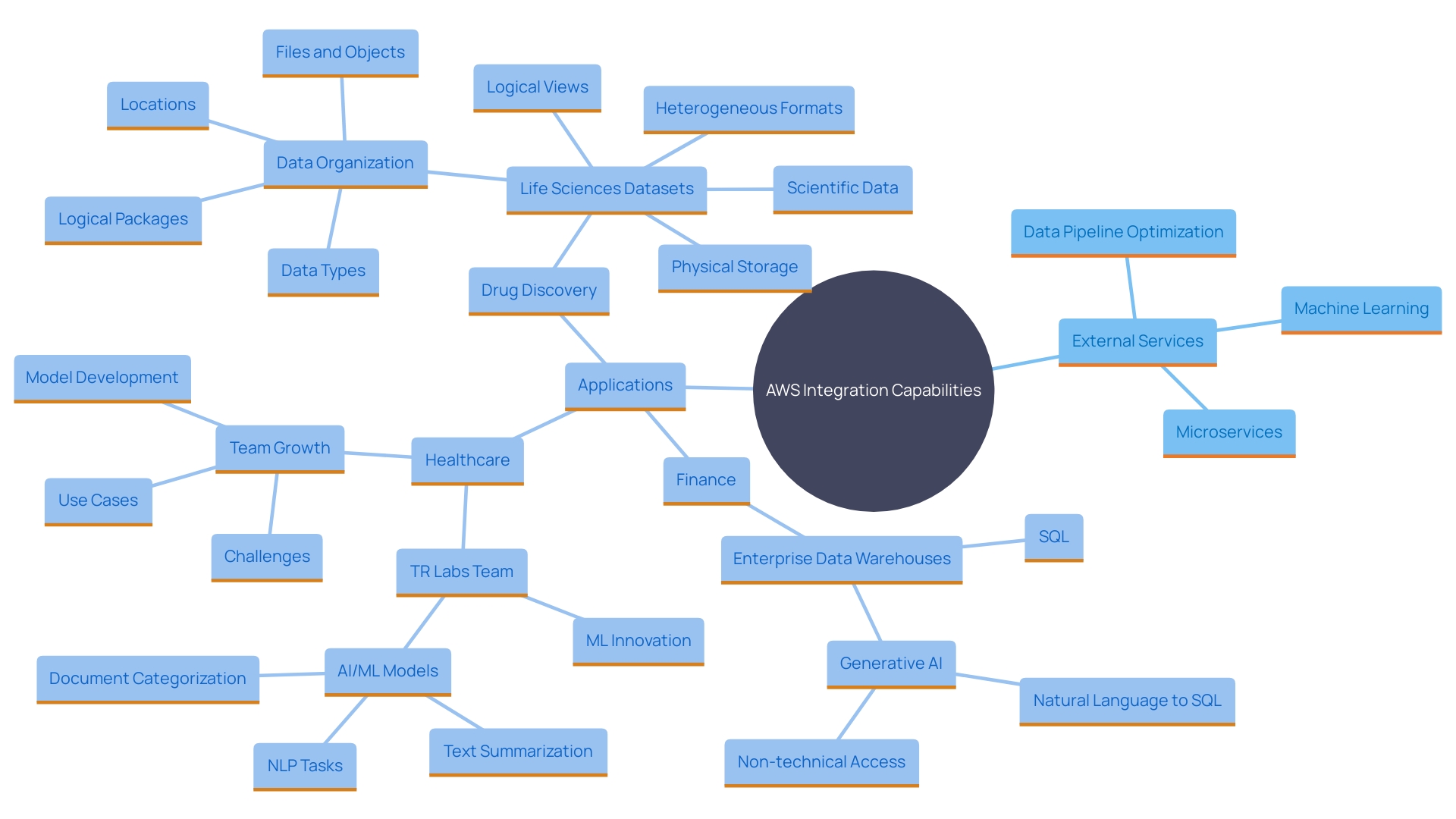
Conclusion
The exploration of AWS Lambda has illuminated its transformative potential within serverless architecture, showcasing its multifaceted applications across various domains. From the creation of fully functional serverless websites to the enhancement of chatbots and voice assistants, AWS Lambda stands out for its ability to streamline development processes, reduce costs, and eliminate the need for server management.
Integrating AWS Lambda with other AWS services, such as Amazon API Gateway and Amazon Kinesis, further enhances its capabilities. This integration supports the development of scalable APIs and real-time data processing, enabling organizations to respond swiftly to evolving data demands. The automation of tasks like backup processes and log analysis not only mitigates risks associated with manual interventions but also fosters operational efficiency.
Moreover, the role of AWS Lambda in predictive page rendering and serverless CRON jobs illustrates its versatility in optimizing application performance and managing scheduled tasks effectively. By leveraging Lambda’s seamless integration with external services, businesses can unlock new opportunities for innovation and enhance their operational frameworks.
In summary, AWS Lambda is not merely a tool for serverless computing; it is a catalyst for innovation and efficiency across various sectors. As organizations continue to embrace this technology, the focus shifts from traditional server management to harnessing the power of code deployment, ultimately driving better business outcomes in an increasingly digital landscape.




